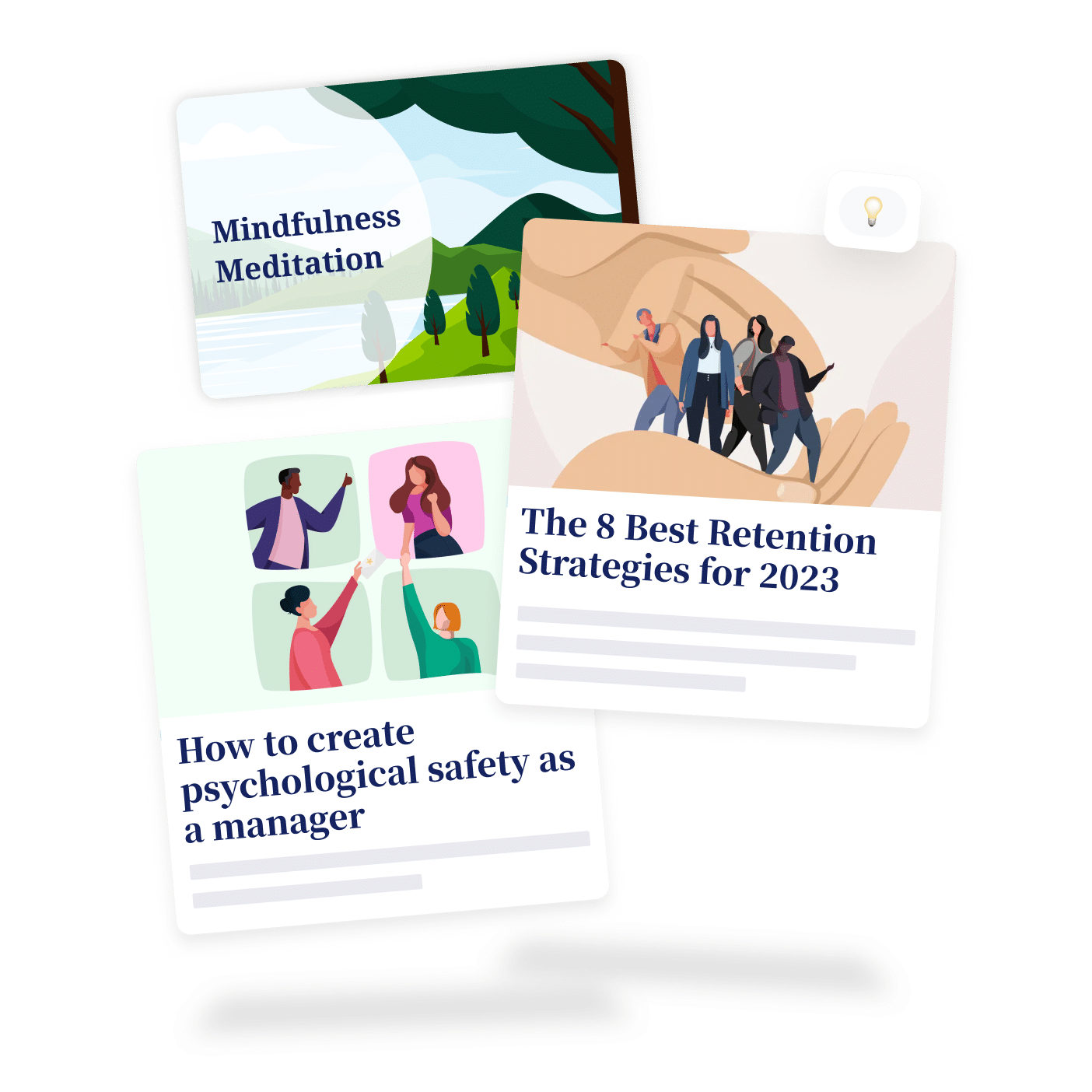The attitudes, behaviours and atmosphere at work can have a significant impact on people’s mental well-being. Equally, poor mental well-being can harm the success and productivity of a company or organisation.
This article will discuss how work culture and employee mental well-being are connected and provide guidelines on how to create a culture that promotes and prioritises well-being.
How work and well-being are connected
Well-being is a multidimensional concept. It describes a person’s state of physical and mental health. It also includes everything that makes life feel meaningful and the person feel valued. Thus, because work is such an integral part of most people’s lives, it’s an important element of well-being.
But what comes first? Well-being in life or well-being at work? Research has found that job satisfaction, purpose, and social connections at work influence out-of-work happiness. But it works the other way, too. Happiness in life, having a sense of meaning, and mental health influence job well-being.
That means it’s a reciprocal relationship: our well-being in life influences our well-being at work and vice versa. Therefore, not only it’s important to look after employee well-being while they’re working but also to have support available to help people with their mental health outside of work.
When people are happier in life, they’re better at coping with stress and difficulties. The positive emotions they experience influence their perception of their environment and situations and interactions – the so-called “rose-tinted glasses” effect.
Equally, being happy in your job positively affects other areas of your life. When working conditions are good, work can actually protect people’s mental well-being as it provides:
- Income and financial stability
- Sense of purpose and achievement
- Opportunities to connect with other people and a community
- Structure and routine
On the other hand, when people have poor mental health (e.g., depression or anxiety) this negatively influences their satisfaction and engagement at work – they’re less motivated, enjoy work less, and produce lower-quality results.
What are the conditions that contribute to workplace well-being?
According to Professor of Psychology Peter Warr, there are 12 “vitamins” that lead to higher workplace well-being:
- Having control (or autonomy) over activities
- Being able to use skills
- Having goals and feeling able to achieve them
- Variety
- Clarity about the work
- Relationships with others
- Income
- Physical security
- Feeling part of a community
- Supportive management
- Opportunities
- Equality and inclusivity
What are mental health risks at work?
Workplace conditions can significantly influence people’s well-being, and there are several risks that can contribute to employees experiencing poor well-being. For example, when employees face discrimination, bullying, exclusion, harassment or violence. The risks, however, can also be more subtle and include being unclear about the job role, lacking control over workload and activities, feeling overwhelmed and unsupported, and missing career development opportunities.
Burnout is another growing problem, with almost 50% of the UK workforce reporting they are close to burning out, which in turn can lead to an increased rate of sick days and absenteeism and reduce productivity. The causes of burnout include excessive workload, lack of a sense of control and achievement, discrimination, and lack of support.
Finally, the way work affects a person also depends on their personality and general stress levels outside of work, which should be taken into account when creating well-being policies.
Therefore, creating a workplace that protects and promotes well-being requires balance and personalisation. People want to feel heard and understood as an individual; they want to feel challenged and valuable but in control rather than overwhelmed. In the next section, we’ll go into more detail about how to create a healthy work culture.






